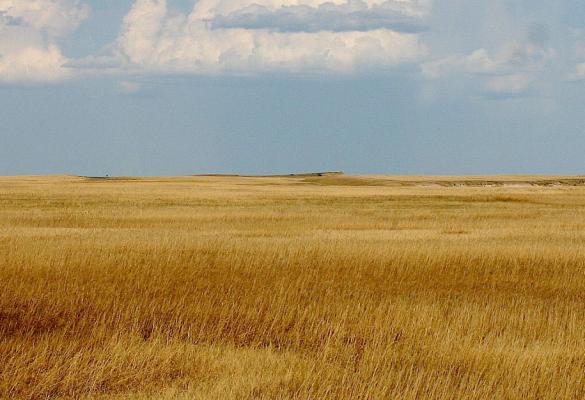Grassland Conservation and Restoration
Grasslands, often called prairies in the United States, are habitats where the dominant vegetation type is grass. Though trees may be present, there is often not enough precipitation to support a forest ecosystem. Grassland habitats are typically maintained through a combination of limited precipitation, fire, and grazing animals (National Geographic Society n.d., Buisson et al. 2022). Intact grasslands support high levels of biodiversity and have high conservation value from the numerous benefits they provide, including pasture forage, water regulation, erosion control, support for pollinators, and carbon storage and sequestration. However, grassland habitats have been severely degraded in many areas of the world and continue to be threatened by land cover conversion to agriculture, woody encroachment, altered fire and grazing regimes, urbanization, invasive species, and climate change (Buisson et al. 2022; Török et al. 2021). In the US Great Plains region, more than half the original grasslands have been lost (Buisson et al. 2022). Grassland restoration is important given the amount of these habitats that have been lost and the immense value they provide. Despite their value, there is relatively little focus on grassland restoration research compared to that for forests, wetlands, and rivers (Buisson et al. 2022; Török et al. 2021).

Case Studies
Abandoned Farmland Restoration in the Sonoran Desert
Conservation of the Masked Bobwhite Quail
Early Tallgrass Prairie Restoration at Homestead National Historical Park
Ecological Benefits of Compost for Rangeland Plant and Soil Health
Grassland Habitat Monitoring for Wintering Chestnut-collared Longspur
Herbicide Treatment of Western Honey Mesquite in Texas Grasslands
Increasing Habitat Connectivity and Permeability for Pronghorn in Southeastern Arizona
Multi-Species Grassland Restoration in the Bonita Area of Southeastern Arizona
Native Grass Hay Production for Multiple Benefits at the Cobra Ranch
Over 30 Years of Brush Management on the Elkhorn Ranch
Paradise Meadow Restoration, Mount Rainier
Prescribed Burns for Grassland Management at the Sevilleta National Wildlife Refuge
Rangeland Restoration Following the Martin Fire in Reno, Nevada
Restoration Research at Red Rock Canyon State Park
Restoration of Riparian Wet Meadows
Restoring Agave for Migratory Bats in the United States-Mexico Borderlands
Restoring Rangelands in Northern New Mexico with Keyline Design
Revegetation Project at Marine Corps Air Ground Combat Center at 29 Palms
Riparian Woodland and Grassland Restoration to Increase Resilience to Drought
Shrub Control to Restore a Coastal Prairie Ecosystem
Tallgrass Prairie Restoration at Homestead National Historical Park
The Duralde Cajun Prairie Restoration Project, Evangeline Parish
The Role of Thermal Regime in Tundra Plant Community Restoration
Treatment of Non-Native Lovegrasses at Appleton-Whittell Research Ranch
Trinity River Watershed, Dallas, Texas
Using Mulch and Compost for Rangeland Restoration
Using Soil Science to Restore Desert Grasslands in Big Bend National Park
Likely Benefits and Outcomes
This strategy is likely to achieve these project goals. Click to search for strategies with a similar benefit.
Related Green (natured-based) vs. Gray infrastructure
In development.
